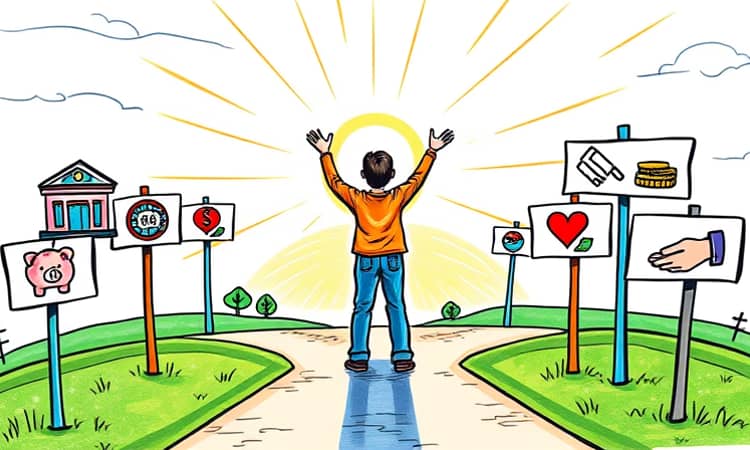Payday loans can feel like a quick solution when cash is tight, but they often lead to a dangerous spiral of debt. This article explores sustainable, responsible borrowing options that protect your financial health and help you build lasting financial resilience.
By understanding the risks and comparing safer alternatives, you can make informed decisions that free you from high costs and hidden traps. From credit union programs to community resources, discover paths toward flexible, low-cost borrowing options tailored to your needs.
Understanding the Hidden Costs of Payday Loans
Payday loans are designed as short-term fixes, typically requiring repayment in two weeks. They come with astronomical interest rates and hidden fees that can exceed 300 percent APR. Borrowers who miss a payment often face rollover charges that rapidly balloon their balance.
The true cost goes beyond the immediate fees. Many find themselves stuck in a cycle of mounting, unmanageable debt as they borrow repeatedly to cover each new fee. This pattern can erode credit scores and undermine long-term financial goals.
Credit Union and Bank-Based Solutions
Credit unions and traditional banks offer several alternatives that are both accessible and affordable. One standout is the Payday Alternative Loan (PAL), a small, short-term loan with an APR capped at 28 percent. PALs typically range from $200 to $1,000, with repayment periods of one to three months and nominal application fees.
Another option is a standard personal loan. Terms can extend for several years, and APRs vary based on creditworthiness—often between six and 36 percent. Unlike payday loans, these personal loans report to credit bureaus, giving you the chance to improve your credit score through consistent on-time payments.
These bank-based loans require a credit check, but many financial institutions have programs tailored to borrowers with modest credit histories. Always ask for a complete breakdown of fees and repayment schedules before committing.
Personal Networks and Employer-Assisted Options
When formal lenders aren’t an option, turning to family or friends can offer relief. An informal loan from someone you trust may come with zero interest and flexible repayment. To protect relationships, write down the agreed terms and stick to the schedule.
Employers can also be a source of short-term funding. Many companies provide paycheck advances or partner with apps that allow small withdrawals before payday for minimal fees. While convenient, use these services sparingly to avoid dependency and additional costs.
Peer-to-peer lending platforms connect you with individual investors willing to fund loans. Rates often fall well below payday loan levels, though they depend on your credit and platform fees. The application process is usually online and straightforward.
Community Resources and Nonprofit Support
Nonprofit organizations and faith-based groups frequently offer emergency grants or zero-interest loans to cover essentials like rent, utilities, or medical bills. These programs can close urgent gaps without burdening you with interest.
Lending circles are community-based groups that pool resources to lend interest-free money to members on a rotating basis. They foster trust and accountability while helping participants strengthen long-term financial resilience. Examples include the Mission Asset Fund and other local cooperative initiatives.
In some countries, government budgeting loans are available for people receiving specific benefits. These funds are designed for essential expenses and come with clear repayment terms well below commercial rates.
Creative Strategies and Preventive Measures
If borrowing still seems risky, explore ways to raise cash and reduce expenses. Selling unwanted items online or at yard sales can generate quick funds. Starting a side hustle—such as dog walking, tutoring, or freelance tasks—builds income streams that pay off over time.
Using bank overdraft protection is another option, but it carries fees and should be a last resort. Remember, the best defense against predatory borrowing is a well-stocked emergency fund. Even small, regular contributions can create a safety net that shields you from future crises.
When you prioritize saving and budgeting, you shift from reactive borrowing to proactive money management. That shift can transform your financial future, fostering transparent, manageable repayment terms for any funds you do need.
Actionable Steps to Choose the Right Option
- Assess whether you truly need to borrow or if cutting expenses is possible.
- Compare all costs, including APR, fees, and late penalties.
- Check eligibility for credit union PALs or local nonprofit assistance.
- Understand the impact on your credit and your ability to repay on time.
- Avoid rollovers and always read the fine print thoroughly.
- Build an emergency fund to reduce reliance on borrowing in the future.
Choosing a safer alternative to payday loans empowers you to break free from costly debt cycles. By exploring these options and following the actionable steps outlined above, you can manage financial emergencies without sacrificing your long-term wellbeing. Embrace financial empowerment through informed decisions and forge a path toward stability and growth.
References
- https://mycreditunion.gov/manage-your-money/consumer-loans-credit-cards/payday-alternative-loans
- https://www.incharge.org/debt-relief/payday-loan-alternatives/
- https://profedcu.org/learn/blog/payday-loan-alternatives
- https://www.nerdwallet.com/p/loans/personal-loans/alternatives-to-payday-loans
- https://www.lendingtree.com/personal/payday-alternative-loan/
- https://www.businessinsider.com/personal-finance/personal-loans/how-to-borrow-money
- https://www.experian.com/blogs/ask-experian/payday-loan-alternatives/
- https://www.stepchange.org/debt-info/considering-a-payday-loan.aspx














